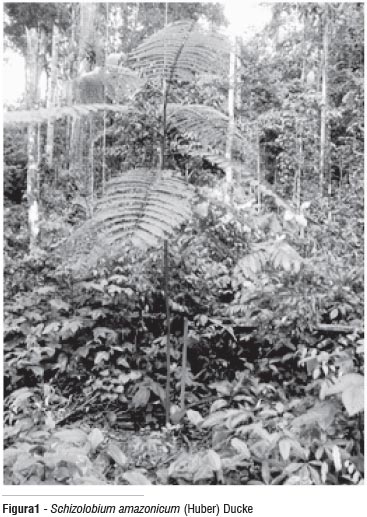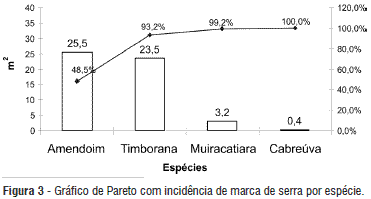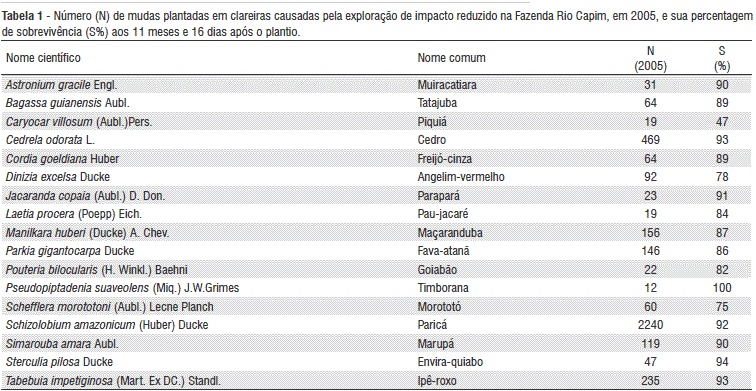Survival of seedlings planted in 400 gaps created by reduced impact logging in a terra firme forest in the Eastern Amazonia was evaluated. 3,818 seedlings from 17 species occurring in the study area, except for Schizolobium amazonicum (paricá), which is rare in natural forests of Paragominas region, were planted in the gaps. Spacing of planted seedlings was 5m. According to survival of seedlings during 11 months after planting, the species Schizolobium amazonicum, Cedrela odorata, Jacaranda copaia, Manilkara huberi, Astronium gracile, Pouteria bilocularis, Tabebuia impetiginosa,Pseudopiptadenia suaveolens, Cordia goeldiana, Parkia gigantocarpa, Simarouba amara, Sterculia pilosa, Laetia procera, Dinizia excelsa and Schefflera morototoni can be suggested for enriching in gaps created by reduced impact logging. Complementary studies, mainly related to growth rates of seedlings, must be carried out and in a period longer than the present study to confirm the benefits of enrichment planting in gaps as an alternative to boost forest productivity and economic value of managed natural forest in the Brazilian Amazon.
Post-harvesting silviculture; Silvicultural treatments; Enrichment planting in gaps; Survival of tree species planted in gaps; Amazonian forest





